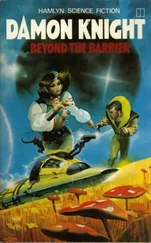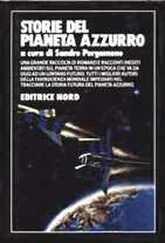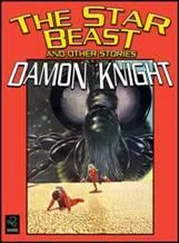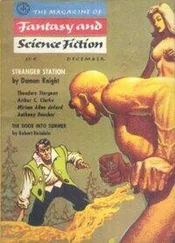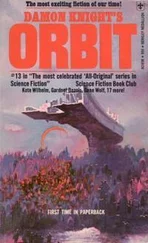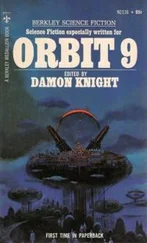Damon Knight - Orbit 21
Здесь есть возможность читать онлайн «Damon Knight - Orbit 21» весь текст электронной книги совершенно бесплатно (целиком полную версию без сокращений). В некоторых случаях можно слушать аудио, скачать через торрент в формате fb2 и присутствует краткое содержание. Год выпуска: 1980, ISBN: 1980, Издательство: Harper & Row, Жанр: Фантастика и фэнтези, на английском языке. Описание произведения, (предисловие) а так же отзывы посетителей доступны на портале библиотеки ЛибКат.
- Название:Orbit 21
- Автор:
- Издательство:Harper & Row
- Жанр:
- Год:1980
- ISBN:0-06-012426-1
- Рейтинг книги:5 / 5. Голосов: 1
-
Избранное:Добавить в избранное
- Отзывы:
-
Ваша оценка:
- 100
- 1
- 2
- 3
- 4
- 5
Orbit 21: краткое содержание, описание и аннотация
Предлагаем к чтению аннотацию, описание, краткое содержание или предисловие (зависит от того, что написал сам автор книги «Orbit 21»). Если вы не нашли необходимую информацию о книге — напишите в комментариях, мы постараемся отыскать её.
Orbit 21 — читать онлайн бесплатно полную книгу (весь текст) целиком
Ниже представлен текст книги, разбитый по страницам. Система сохранения места последней прочитанной страницы, позволяет с удобством читать онлайн бесплатно книгу «Orbit 21», без необходимости каждый раз заново искать на чём Вы остановились. Поставьте закладку, и сможете в любой момент перейти на страницу, на которой закончили чтение.
Интервал:
Закладка:
Hushed silence and attentive faces.
“So I started looking around for who might have done such a thing. I figured they were probably still alive. I figured they were rich. I figured there were more than one of them, certainly, although I suspected it was a single person’s idea. I figured they had a big ship, and a lot of specialized equipment. From that I made more assumptions, but they concerned motivation and were less certain, though of great interest and aid to me—”
“But you could make assumptions forever! What did you do?” April again.
“Uh. Research. I sat in front of a screen and punched out codes, read the results, found new indexes, punched out more codes. I looked through shipping records, made quick investigations of various rich people. That sort of thing. It was boring work in some ways, but I enjoyed doing it. At first I thought of myself as working my way through a maze. Then that seemed the wrong image. In front of a library screen I could go anywhere. Because of the access-to-information laws I could look in every file and record that existed, except for the illegal secret ones— there are a lot of those—and if they had code call-ups—you know, were secreted somewhere in larger data-banks—then I could probably get into those, too. I bumped into file-freaks and learned new codes, and learning them took me into data banks that taught me even more. Trying to visualize it, I could see myself as a tiny component in a single communications network, a multibank computer complex that spanned the solar system— a dish-shaped, invisible, seemingly telepathic web, a wave pattern that added one more complication to the quark dance swirling in the sun’s gravity well. So I was not in a maze, I was above it, and I could see all of it at once—and its walls formed a pattern, had a meaning, if I could learn how to read it. . . .”
I stopped and looked around. Blank faces, neutral, tolerant nods. “You know what I mean?” I asked.
No answers. “Sort of,” said Elaine.
Wandering, wandering in the night of Waystation, the Sunlight out, and the other side of the cylinder a web of streetlights and colored neon points. The day after payday, and three hours before the seminar was to meet. I stopped at the News and Information Center, waited till I could get a booth. When I got one I sat down and aimlessly called up indexes. I wanted to be distracted. Eventually I selected Recreation News, which played continuously.
The room darkened and then revealed a platform in space. The scene moved to one side and I could see we were on the extension of a small satellite, in a low orbit around an asteroid.
The lilting voice of one of the sports commentators spoke. “The ancient game of golf has undergone yet another transformation out here on Hebe,” he said. We moved farther out onto the platform, and two golfers appeared at the edge of it, in thin hoursuits. “Yes, Philip John and Arafura Aloesi have added a new dimension to their golfing on and around Hebe. Let’s hear them describe it for themselves. Arafura?”
“Well, Connie, we tee off from up here, that’s about it, in a nutshell. The pin is back down there near the horizon, see the light? It’s two meters wide, we figured we deserved that much from up here. Mostly we play hole-in-one.”
“What do you have to think about when you’re hitting a shot from up here, Phil?”
“Well, Connie, we’re in a Clarke orbit, so we don’t have to worry about orbital velocity. It’s a lot like every other drive, actually, except you’re higher up than usual—”
“You have to watch out for hitting it too hard, gravity’s not much around a small rock like this, if you drive with a one-wood you’re liable to put the ball in orbit, or out in space even—”
“Yeah, Connie, I generally use a three-iron and shoot down at it, that works best. Sometimes we play where we have to put the ball through one orbit before it can hit ground, but it’s hard enough as it is, and—”
“All right, let’s see you guys put one down there.”
They swung and the balls disappeared.
“Now how do you see where it’s hit, guys?”
“Well, Connie, we got this radar screen following them down to the horizon—see, mine’s right on track—then the green has a hundred-meter diameter, and if we land on that it shows on this screen here. Here, they’re about to hit—”
Nothing appeared on the green screen beside them. Phil and Arafura looked crestfallen.
“Well, guys, any future plans for this new twist?”
Phil brightened. “Well, I was thinking if we were to set up just off Io, we could use the Red Spot as the hole and shoot for that. No problem with gravity there—”
“Yes, that’d be one hell of a fairway. And that’s all from Hebe for now, this is Connie McDowell—”
My time ran out and the room was dark, then bright with roomlight. Eventually the attendant came in and roused me. Again my mouth was hanging open: the astonishment of inspiration. I jumped up laughing. “I got him!” I said. “Got the old fool,” still laughing. “Got his ass nailed to the floor!” The attendant stared at me and shook his head.
Only a month later (I had written it in a week) this article appeared in Shards:
There is no good evidence concerning the age of Icehenge. Most dating methods developed by archeologists are applicable to substances and processes found only on Terra. In space the processes that are measured simply do not occur.
The ice of Icehenge, it has been determined, is about two and a half billion years old. But when that ice was cut into beams has proven more difficult to determine. A certain amount of the ice has sublimated spontaneously, but at seventy degrees Kelvin this process is extremely slow, and its effects at Icehenge are too small to measure.
The only dating method that has been applied to Icehenge is the micrometeor count method, developed by Professor Stallworth with the help of Hjalmar Nederland. This method is the equivalent of the terrestrial method of patination, and like patination, it relies on an intimate knowledge of local conditions, if it is to achieve any accuracy. Stallworth has assumed, and assumed only, that micrometeor fall is a constant both temporally and spatially. After making this assumption he has been fairly thorough, and has taken counts on artificial surfaces on Luna and in the asteroids, to establish a reliable short-term time chart. According to his calculations, micrometeors have fallen on Icehenge for a thousand years, plus or minus five hundred. This makes Icehenge at least a hundred and fifty years older than the 2248 dating, but is considered close enough by Nederland, who has used Stallworth’s results to support his theory.
There are two problems with this dating. First, the entire method is based on an assumption that is not yet proved: that micrometeor fall is a constant. Second, and more important: the micrometeor fall on Icehenge could be part of the manufactured evidence, and there would be no way of telling. Micrometeors are, for the most part, carbon dust. A handful of it sprinkled from a few hundred meters over the monument would create exactly the same effect as a thousand years of natural micrometeor fall. It is, in addition, a precaution that would occur very quickly to a thoughtful hoaxer; for micrometeors would be the only force acting on the structure over a short period of time. Though a method for measuring this action did not exist at the time of the monument’s construction (and still does not, in my opinion), the existence of micrometeor fall was known, and so the dating method could be both foreseen and dealt with, by an articial fall. Given the elaborate nature of the hoax, it is a possibility more likely than not.
Читать дальшеИнтервал:
Закладка:
Похожие книги на «Orbit 21»
Представляем Вашему вниманию похожие книги на «Orbit 21» списком для выбора. Мы отобрали схожую по названию и смыслу литературу в надежде предоставить читателям больше вариантов отыскать новые, интересные, ещё непрочитанные произведения.
Обсуждение, отзывы о книге «Orbit 21» и просто собственные мнения читателей. Оставьте ваши комментарии, напишите, что Вы думаете о произведении, его смысле или главных героях. Укажите что конкретно понравилось, а что нет, и почему Вы так считаете.


